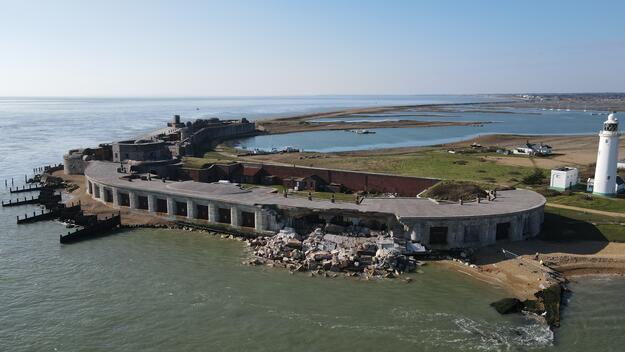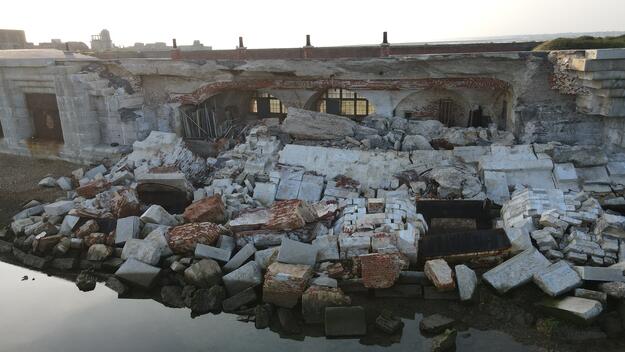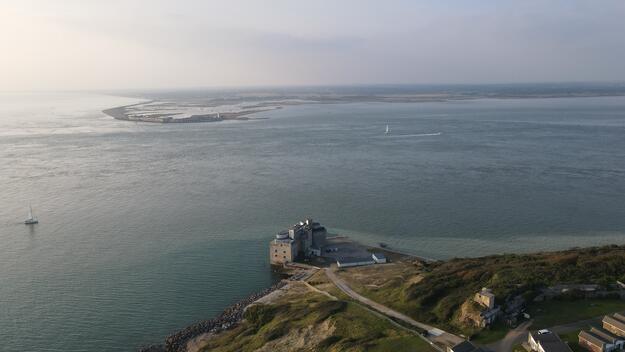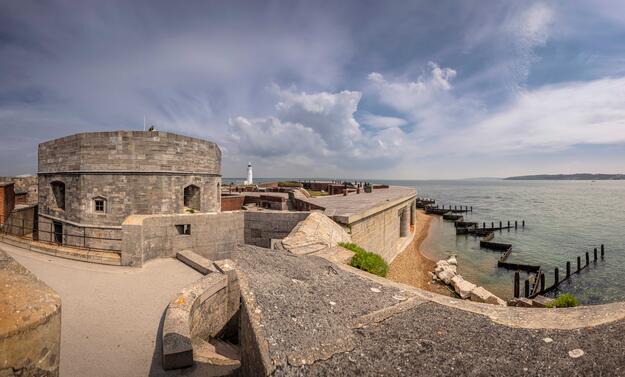Hurst Castle
Site History and Significance
A Historic Artillery Fort
Built in 1544 at the order of King Henry VIII, Hurst Castle is a historic artillery fort at the end of a shingle spit of land on England’s southern coast. The location was originally fortified to guard a strategic naval passage and protect the country from invasion. The Tudor tower was strengthened in 1793 after the outbreak of war with revolutionary France and again during the Napoleonic Wars. Hurst Castle took its current form between 1861 and 1875, with the addition of two long gun batteries curving away on either side of the central tower along the waterfront. While never attacked, Hurst Castle remained in military use until after World War II. In the intervening decades, it has become a popular heritage attraction, allowing its many visitors to understand the history of England’s coastal defenses and enjoy the experience of the seaside.
Rising Sea Levels and Loss Management
The long-term survival of Hurst Castle depends on the ability to protect it from the action of the sea, made ever harder by sea level rise and more frequent storm surges. The heavy nineteenth-century batteries sit on a relatively shallow foundation of brick upon concrete. Typically covered by shingle, the foundation is easily undercut once exposed to waves, which can occur when heavy storms wash away massive quantities of protecting shingle. In February 2021, a section of the eastern battery suffered a collapse as a result.
In response, English Heritage, the charity which cares for the site, is mounting a substantial conservation program, which includes reinforcing the ground underneath the foundation of the east battery and, crucially, protecting the shingle beach from erosion. Swift action has allowed the site to partially reopen to the public, but site managers point out that the sea level is predicted to rise by up to 5 ft. (1.5 m) over the next 100 years, making change and loss inevitable.
2022 World Monuments Watch
The 2022 World Monuments Watch calls attention to Hurst Castle as a telltale warning about the future fate of coastal heritage places, and as a global case study of the challenging tradeoffs climate change will necessitate.
![]()
Learn More
Through the World Monuments Watch, WMF collaborates with local partners to design and implement targeted conservation programs—including advocacy, planning, education, and physical interventions in the historic built environment—to improve human well-being through cultural heritage preservation.
Sign up for our newsletter to receive regular updates on our projects, stories from the field, upcoming events, and more!
![]()
World Monuments Fund’s work at Hurst Castle has been made possible, in part, by support from the Paul Mellon Fund for Architectural Preservation in Great Britain.




